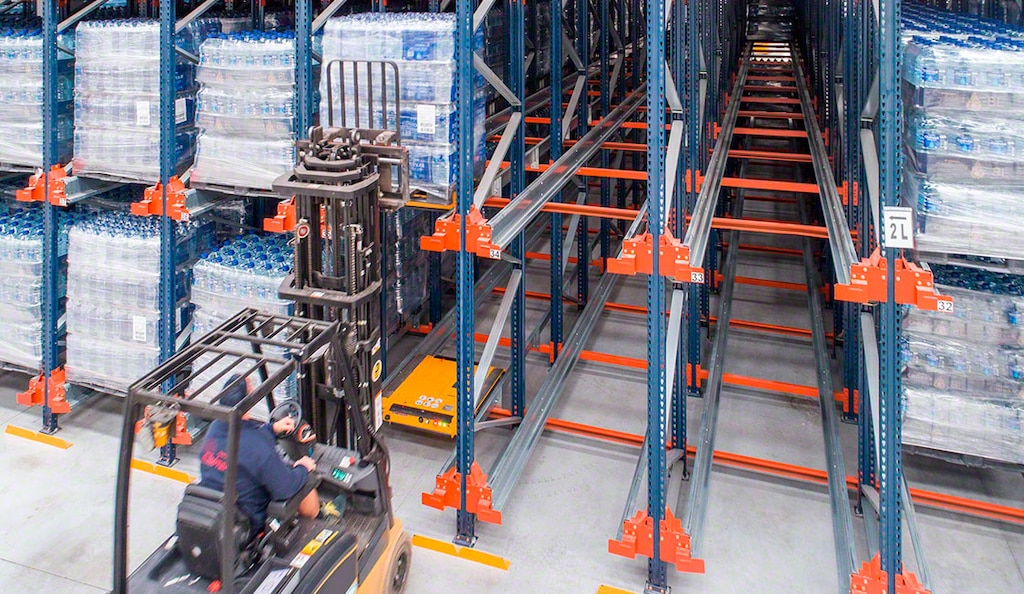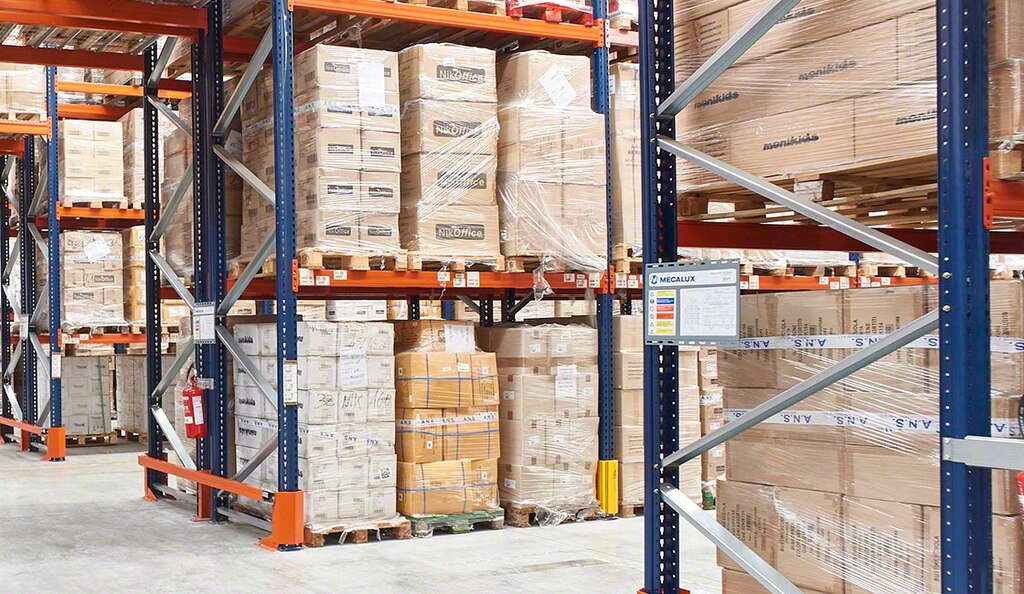
Warehouse management done right
Warehouse management is crucial when it comes to making logistics operations efficient as well as competitive. And this is even more true against a backdrop in which the rise of ecommerce makes it necessary to prepare more and more orders that are smaller, personalized, and require ultra-fast deliveries.
Warehouses have gone from being a space used solely to store goods to becoming an essential part of the supply chain. For this reason, proper warehouse management is fundamental for ensuring business competitiveness.
What’s warehouse management?
Warehouse management consists of organizing and supervising the receiving, storage, stock control, and order preparation and dispatch processes in a logistics facility.
The logistics manager oversees the operations in the warehouse manually or with the help of a warehouse management system (WMS), which automates tasks and does away with the risk of error.
As opposed to inventory management, which only coordinates goods inflows and outflows, warehouse management includes the organization of all processes taking place in the logistics facility, from product location criteria to picking strategies.
Warehouse management objectives
The demands of Logistics 4.0 — omnichannel sales, shorter delivery times, and free returns — have made logistics operations more complex. Warehouses have had to ramp up their productivity and efficiency to ensure that costs don’t reduce companies’ competitiveness. Good warehouse management makes it possible to rein in excessive costs in stock control and order processing, two of the costliest operations for logistics facilities.
In addition to the rising number of SKUs to store, ecommerce has boosted product seasonality and peaks in demand. With appropriate management, goods organization is much simpler and can adapt to the needs of customers at different times of the year.

Warehouse management, step by step
Effective warehouse management should take into account the totality of the processes, from the physical distribution of the goods to the strategies and criteria for preparing and dispatching orders. Let’s run through eight key points for warehouse management:
1. Define the warehouse layout
The first step to sound warehouse management is to devise a warehouse layout design in line with the characteristics of your product. The logistics facility can be divided into zones, each assigned to a process: loading, unloading, storage, and order preparation. Based on the type of goods and/or operations, you might also need to set up kitting or order consolidation stations, among other areas.
2. Choose the right storage system
The goods attributes will determine the most suitable storage system for each warehouse. In the case of opting for compact storage solutions, the logistics manager must first decide on the goods management method — LIFO (last in, first out) or FIFO (first in, first out). This decision will condition the organization of the operations and the distribution of space in the warehouse.
More and more companies are swapping their manually operated solutions with automated storage and retrieval systems (AS/RS), which optimize the flow of goods when continuous, uniform load movements are required.
3. Store the products in optimal locations
Once your logistics facility is outfitted with the ideal storage systems, the next step is to determine how the goods should be distributed among the different warehouse locations (i.e., the slotting process).
The logistics manager must establish a set of location rules and criteria to streamline order preparation. For example, based on stock turnover, best-selling products could be slotted near the dispatch area to cut down on operator movement.
4. Digitize warehouse control
The best way to guarantee efficient management of your facility is to invest in warehouse management software such as Easy WMS from Interlake Mecalux. This program features a wide range of functionalities that can be adapted to any type of logistics facility, product, or operation.
One of Easy WMS’s main functions is to automate the most complex order preparation processes: location management, the creation of pick paths, and the organization of picking tasks.
5. Establish an effective receiving process
The goods receipt process is vital when it comes to efficient stock control. There are many solutions for increasing the throughput of receiving operations. You can assign a buffer to supply the picking locations, set up a staging area to facilitate order preparation via cross-docking, and even automate a storage zone by installing a miniload system (AS/RS for boxes) to serve as a goods buffer.
6. Prepare error-free orders
Order preparation is one of the most demanding operations in the warehouse. As pointed out by Logistics and Operations Management Professor René de Koster (Rotterdam School of Management) in his study Design and control of warehouse order picking: A literature review, picking can account for over 50% of total warehousing costs.
For this reason, logistics managers need to pay special attention to the picking process, ensuring that the locations are stocked with all the necessary products to prevent interruptions and mistakes in this operation.
7. Safeguard the warehouse
You can’t achieve productivity or efficiency without a facility that’s safe for the operators, storage systems, and the goods. The logistics manager must ensure that proper warehouse lighting and signage are in place to eliminate any risk of accident. Additionally, as in any industrial facility, it’s imperative to comply with the existing laws in each country in terms of safety and storage systems and equipment, both manual and automatic.
8. Anticipate change
Warehouse management means not only optimizing the operations that take place in the facility, but also foreseeing possible changes or disruptions that could affect dynamics in the facility. Digitizing management supports this task, as it makes it possible to structure the information generated in the warehouse so that the logistics manager can make decisions based on objective data.

Indicators of good warehouse management
There are multiple supply chain KPIs for measuring effective warehouse management. Depending on the company’s industrial sector or the logistics center’s role in the supply chain, these are some of the most common indicators measured:
- Picking accuracy: order preparation error rate in relation to the total number of orders prepared.
- Stock turnover: how often inventory — or a single item — is sold and replaced over a specific period of time (usually a year).
- Internal order cycle time: the average time elapsed from the moment the warehouse receives the purchase order until the goods leave the shipping dock.
- Backorder rate: percentage of orders that contain SKUs that are out of stock in the facility. This KPI must be minimized.
- On-time delivery: percentage of deliveries that meet the conditions agreed upon with the customers. This indicator demonstrates the level of the company’s logistics service and the efficiency of its warehouse.
These KPIs can be analyzed with the help of a specific application such as Supply Chain Analytics Software. This Easy WMS module from Interlake Mecalux is designed to analyze the throughput of all activities carried out in the warehouse.
Warehouse management and business competitiveness
Logistics has become a strategic element for companies: those that are able to successfully manage the complex challenges presented by logistics 4.0 will stand out from their competitors. Businesses need to equip themselves with tools — e.g., warehouse management software — to implement efficient location, preparation, and dispatch strategies.
Interested in improving your warehouse management and getting the most productivity out of your operations? Don’t hesitate to contact us. One of our expert consultants will advise you on the best solution for digitizing your processes.
